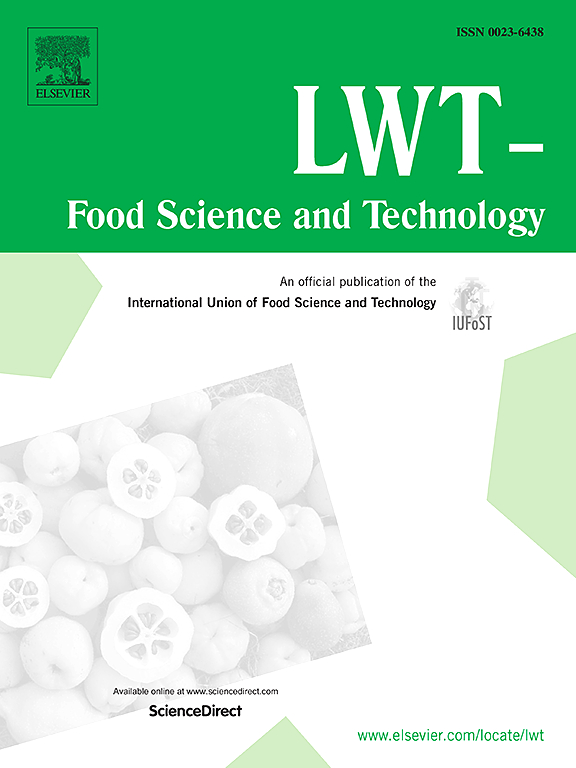不同果肉中糖和有机酸的积累模式协调了百香果的酸甜口感
IF 6
1区 农林科学
Q1 FOOD SCIENCE & TECHNOLOGY
引用次数: 0
摘要
百香果因其独特的酸甜风味而备受推崇,这在很大程度上取决于可溶性糖和有机酸之间的平衡。为了更好地了解甜酸味的形成,我们通过GC-MS和LC-MS分析进行了全面的代谢物分析,系统地量化了多个品种果肉组织中可溶性糖和有机酸的空间分布。蔗糖集中在果肉颈部,产生良好的甜味,而柠檬酸和l -苹果酸主要积聚在果肉体中,共同形成了果实的酸甜风味。整合转录组学分析结合WGCNA共表达网络确定了协调果肉糖酸代谢的关键调控因子PeMYB306、PeNF-YA3和PeSWEET2A-1。研究结果揭示了糖和有机酸化合物在百香果果肉风味调控中的作用,为百香果果肉感官品质的遗传改良提供了初步的思路。本文章由计算机程序翻译,如有差异,请以英文原文为准。
The accumulation pattern of sugars and organic acids in diverse fruit pulps coordinates sweet-sour taste of passion fruit
Passion fruit is highly esteemed for its distinct sweet-sour flavor, a key attribute that largely hinges on the equilibrium between soluble sugars and organic acids. To better understand the sweet-sour flavor formation in P. edulis, we performed comprehensive metabolite profiling through GC-MS and LC-MS analyses, systematically quantifying spatial distributions of soluble sugars and organic acids across pulp tissues in multiple cultivars. Sucrose is concentrated in the pulp neck exerting favorable sweet flavor, while citric acid and L-malic acid accumulate mainly in the pulp body, collectively contributing to the fruit's sweet-sour flavor profile. Integrated transcriptomic analysis combining with WGCNA co-expression networks identified key regulators, PeMYB306, PeNF-YA3 and PeSWEET2A-1, coordinating sugar-acid metabolism in fruit pulp. These findings provide insights into the composition of sugar and organic acid compounds in fine-tuning of flavor of passion fruit pulp, thereby offering a preliminary perspective for the genetic improvement of its sensory qualities.
求助全文
通过发布文献求助,成功后即可免费获取论文全文。
去求助
来源期刊

LWT - Food Science and Technology
工程技术-食品科技
CiteScore
11.80
自引率
6.70%
发文量
1724
审稿时长
65 days
期刊介绍:
LWT - Food Science and Technology is an international journal that publishes innovative papers in the fields of food chemistry, biochemistry, microbiology, technology and nutrition. The work described should be innovative either in the approach or in the methods used. The significance of the results either for the science community or for the food industry must also be specified. Contributions written in English are welcomed in the form of review articles, short reviews, research papers, and research notes. Papers featuring animal trials and cell cultures are outside the scope of the journal and will not be considered for publication.
 求助内容:
求助内容: 应助结果提醒方式:
应助结果提醒方式:


